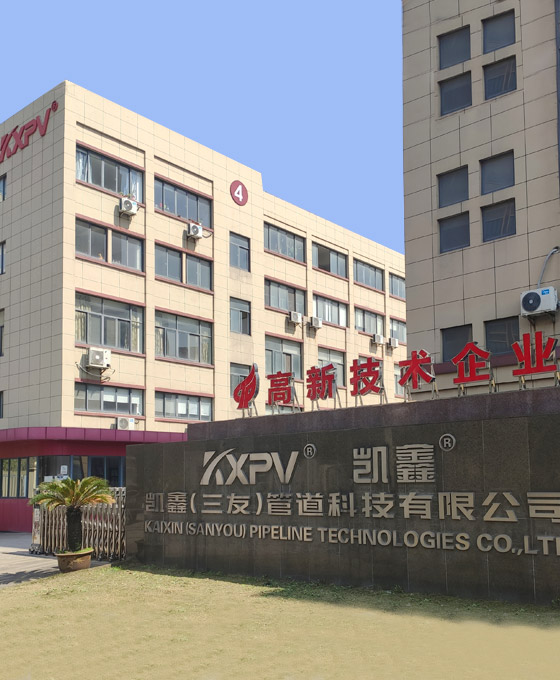FRPP Bottom Valve DN15-300
Cat:Bottom Valve Series
Grey FRPP Foot Operated Bottom Valve Custom 4 Inch DN15-DN300 Low Price Industrial Plastic Foot Valv...
See Details
Material Selection: The performance of flanged ball valves in extreme temperatures is greatly influenced by the materials used in their construction. ...
Read MoreLow Flow Resistance: The design of socket ball valves typically features a full-port configuration, which allows fluid to flow through the valve with ...
Read MoreEase of Installation: The installation process for socket ball valves is designed to be straightforward, which is a critical factor for both professio...
Read MoreDifferent plastic materials, such as PVC, CPVC, and polypropylene, exhibit unique thermal expansion characteristics. When exposed to heat, these mater...
Read MoreWhat Is CPVC/UPVC/PVDF/PPH/FRPP Pipe, Valve & Pipe Fitting
CPVC, UPVC, PVDF, PPH, and FRPP are different types of plastic materials used in the manufacture of pipes, valves, and pipe fittings in the plumbing and industrial industries.
CPVC (Chlorinated Polyvinyl Chloride) is a thermoplastic material that is highly resistant to heat, chemicals, and corrosives. It is often used in hot water piping systems and industrial applications.
UPVC (Unplasticized Polyvinyl Chloride) is a durable and low-maintenance plastic material that is widely used in the construction industry for pipes, windows, and doors.
PVDF (Polyvinylidene Fluoride) is a high-performance thermoplastic material that offers excellent chemical resistance and high durability. It is commonly used in harsh chemical environments, such as chemical processing plants.
PPH (Polyphenylene oxide) is a thermoplastic material with high heat resistance and chemical resistance. It is often used in hot water systems, industrial piping, and chemical processing applications.
FRPP (Fiberglass Reinforced Polypropylene) is a composite material that combines the benefits of polypropylene and fiberglass. It offers high strength and durability, making it a popular choice for pipes and fittings in corrosive environments.
Uses Of CPVC/UPVC/PVDF/PPH/FRPP Pipe, Valve & Pipe Fitting
CPVC (Chlorinated Polyvinyl Chloride) is commonly used for hot and cold water distribution, as well as for chemical transportation.
UPVC (Unplasticized Polyvinyl Chloride) is used for cold water distribution, sewage and drainage systems, and also for industrial applications where high strength and low cost are required.
PVDF (Polyvinylidene Fluoride) is used in chemical processing, pharmaceutical and food production, semiconductor fabrication, and power generation due to its high resistance to heat, chemical and UV exposure.
PPH (Polyphenylene) is widely used in chemical and process piping systems, due to its high temperature resistance, chemical resistance and low permeability to gases and liquids.
FRPP (Fiberglass Reinforced Polypropylene) is used in chemical processing and corrosive waste transportation due to its high resistance to corrosive chemicals and high strength.
Valves and pipe fittings made of these materials are also widely used in various industrial and commercial applications.
Function Of CPVC/UPVC/PVDF/PPH/FRPP Pipe, Valve & Pipe Fitting
CPVC (Chlorinated Polyvinyl Chloride) is used in hot and cold water distribution systems, as well as industrial fluid handling.
UPVC (Unplasticized Polyvinyl Chloride) is commonly used in construction for plumbing, rainwater systems, and underground drainage.
PVDF (Polyvinylidene Fluoride) is used for piping and equipment in chemical processing, pharmaceutical, and semiconductor industries due to its chemical resistance and high temperature tolerance.
PPH (Polyphenylene Hydride) is a thermoplastic polymer used in piping systems for chemical processing, water treatment, and food and beverage industries.
FRPP (Fiberglass Reinforced Polypropylene) is a type of plastic piping used in corrosive chemical environments and aggressive fluid handling.
Pipe fittings connect pipes or tubing sections to create a piping system, while valves control the flow of fluid through the system. The specific function of each type of pipe, valve, and fitting depends on the material and intended use, but they all serve to connect, control, and direct fluid flow in various applications.